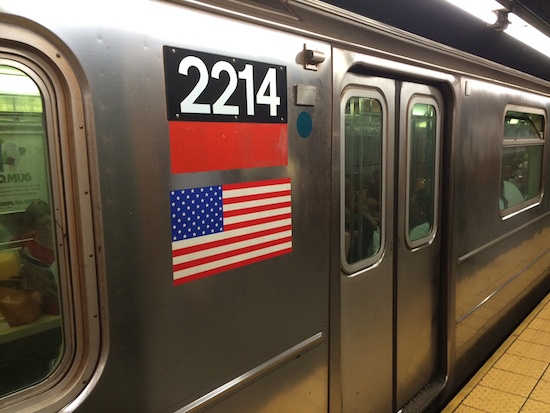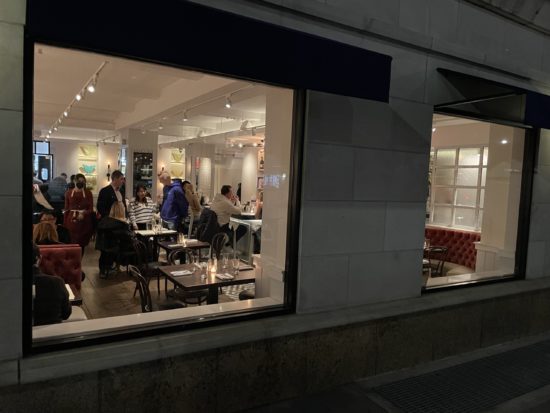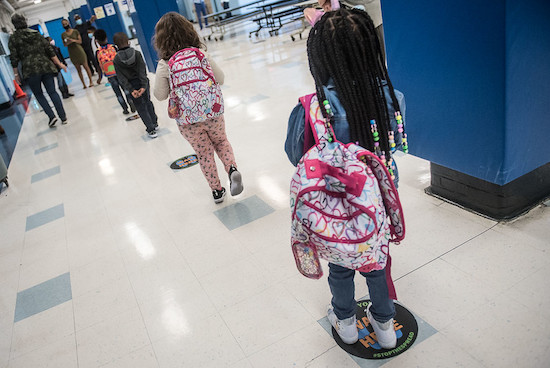
By Carol Tannenhauser
On Wednesday, the Metropolitan Transit Authority (MTA) announced they will be testing subway platform barriers in three stations in Manhattan and Queens, several sources reported.
Some suggested the pilot program was spurred by the tragic death of Upper West Sider Michelle Go, who was pushed before an oncoming train in January.
The MTA “has long resisted calls for such barriers, calling them impractical, expensive and incompatible with such an old subway system,” The New York Times wrote. But they have also recognized, “a rise in people are ending up on the tracks.”
“Last year, the transportation authority reported 1,267 track intrusions — meaning a person on the tracks — a jump of 19 percent from 2019, even as subway ridership declined by more than half,” The Times reported. “Of those incidents, 200 resulted in people being hit by a train, with 68 deaths. Transit officials say most people on the tracks, including those hit by trains, chose to be there. Of the 200 collisions last year, about a quarter, or 47, involved suicide attempts.”
“The barriers will be at Times Square on the 7 line platform, at Third Avenue on the L line, and at Sutphin Boulevard/JFK on the E train,” MTA chief Janno Lieber told NY1. He said the Times Square screens won’t be where Michelle Go was pushed because an MTA study found that waiting area to be too narrow. “’We’re going to be piloting…platform doors at three stations where the engineering does work,’” Lieber said.
That would include about 128 — a quarter of the system’s — stations, according to an 2019 MTA report.
The Times said the program would cost more than $100 million dollars and probably not be completed before 2024.









An unpopular but logical viewpoint:
1) The nature of the system’s station construction creates a myriad of logistical problems
2) Not to mention the “B” division inconsistent door spacing a due to the differences between the 75’ and 60’ cars
3) People have been killed by trains for over a century – why the sudden interest?
4) From what I’ve read, half the deaths last year were apparently suicides (which would happen anyway if not on the subway); many of the others could have been avoided by more careful and observant behavior of waiting passengers – not all, but many.
5) The multi-billions of dollars required to outfit the entire system – which would include new design and technology- could save dozens or hundreds more lives if spent elsewhere. I don’t need to enumerate the areas where sensible investment would be much more productive.
6) Unfortunately,I don’t subscribe to the idea that spending billions to save even one life is worth it.
7) Sure, try them in three stations.
Re: #3 this is the dumbest take I’ve seen in the comments here, by a mile. If we continue to overlook problems simply because they have always existed in the past, how do we fix any problem at all? Slavery, racism, etc.
It’s naive to believe that for over 100 years this problem never surfaced – in all likelihood it was never thought to be the best expenditure of scarce funding, which today as then could save countless more lives by being targeted elsewhere. The issue of how to spend the money is the same as it’s always been, and the inconsistencies in NYC’s subway lines has always been a unique construction challenge.
Absolutely mind boggling and callous. Is the $$$ spent going to effect you personally? Ms. Go might still be here if these changes had been considered years ago. 🙁
There are cost-benefit analyses involved in all decisions. Money does not grow on trees, so we cannot do everything. Would you spend $1 billion to save one life? Sure, if it was your life or the life of a loved one, but it isn’t realistic – this is public policy 101. I largely agree with EdNY’s comments.
Money would be better spent on facilities for those who are truly mentally ill and are a danger to themselves and others. And the money would be spent most efficiently if these facilities were in lower cost areas than NYC.
You call it mind boggling and callous, but the original poster has a point: This money could be better spent. She was pushed because the person who pushed her is crazy. We’re fixing the wrong problem.
Of course the expenditure of tax dollars affects (not effects) me personally. I want to live in a society that spends those dollars to benefit the greatest number of people.
Keeping the existing subway system safe from unhinged sociopaths is well and good, but shouldn’t New York City be thinking longer term about going to an elevated system (including pathways for pedestrians and other modes of transport)in anticipation of sea level rise infiltrating underground spaces?
It has more to do with elevation vs. sea level.
You have to give these Pols’ credit……rather than fix the crux of the problem, just come up w/ some bloated half brained plan (eg:ThriveNYC) that will likely never actually go anywhere.
This is the equivalent of having a leak in your bedroom and putting a (very expensive) bucket there to catch the water. Sure, your floor won’t get wet, but you have not fixed the leak. If this city isn’t serious about addressing the homeless/mentality ill problem, you can spend the entire city budget on pet projects to try to make us feel safe, but in reality, we never will be. See that women who was beaten w/ a hammer in Queens, maybee the City should launch a “helmet” pilot program for riders as well.
We’ll all be long gone when these doors are finally ‘tested’ – I am sure of it. Instead of this ridiculous and wasteful project, how about we just keep dangerous mentally ill people off the subways? You know, since there are no mental treatment services in the subway there is no reason for these people to dwell there. Since they can’t function on their own and pose a threat to others, they need to be in *compassionate* insane asylums.
The Canal Street Station on BMT line is very narrow and scary
72nd street on the 1/2/3 is nerve wracking.
There are better ways for the MTA to spend $100 million dollars than the installation of platform gates at three NYC Transit subway stations. The MTA estimates it would cost $7 billion to install barriers at all 472 system wide stations. Better to spend these funds for more transit police. They could assist in dealing with the far more frequent daily occurance of muggings, robbery, fare evasion, vandalism, urination, defecation, panhandling and the homeless taking over whole subway cars or sleeping on platform benches.
Larry Penner – Transportation Advocate, Writer and Historian – Retired Federal Transit Administration
I don’t believe barriers are the solution but only a costly reaction to the deeper problem. Mentally strong, rational, and healthy people don’t assault and push each other on to the tracks. We need to remove the risk associated with those unstable and sick enough to want to hurt others. Help them! Get them off the streets! I suspect that even if the barriers are a success, the same unstable people will find other ways to lash out and continue to assault and even kill people.
Major cities in Asia have these doors, and I imagine the suicide/push rate is drastically lower. This should be basic infrastructure in 2022.
My coworkers who travel to Japan on a regular basis have been telling me about the subway system there for years. Here’s a good article from 2012. They’re putting the safety and well being of their passengers first. 🙂
https://www.japantimes.co.jp/news/2012/01/17/reference/platform-doors/
It’s terrific, no doubt. Can you imagine if the governments here supported mass transit the way Japan does?
No question it prevents those things from happening. But I’d rather see the $7B it would cost to outfit the entire subway system spent elsewhere where it could save thousands or millions of lives each year, not a few dozen.